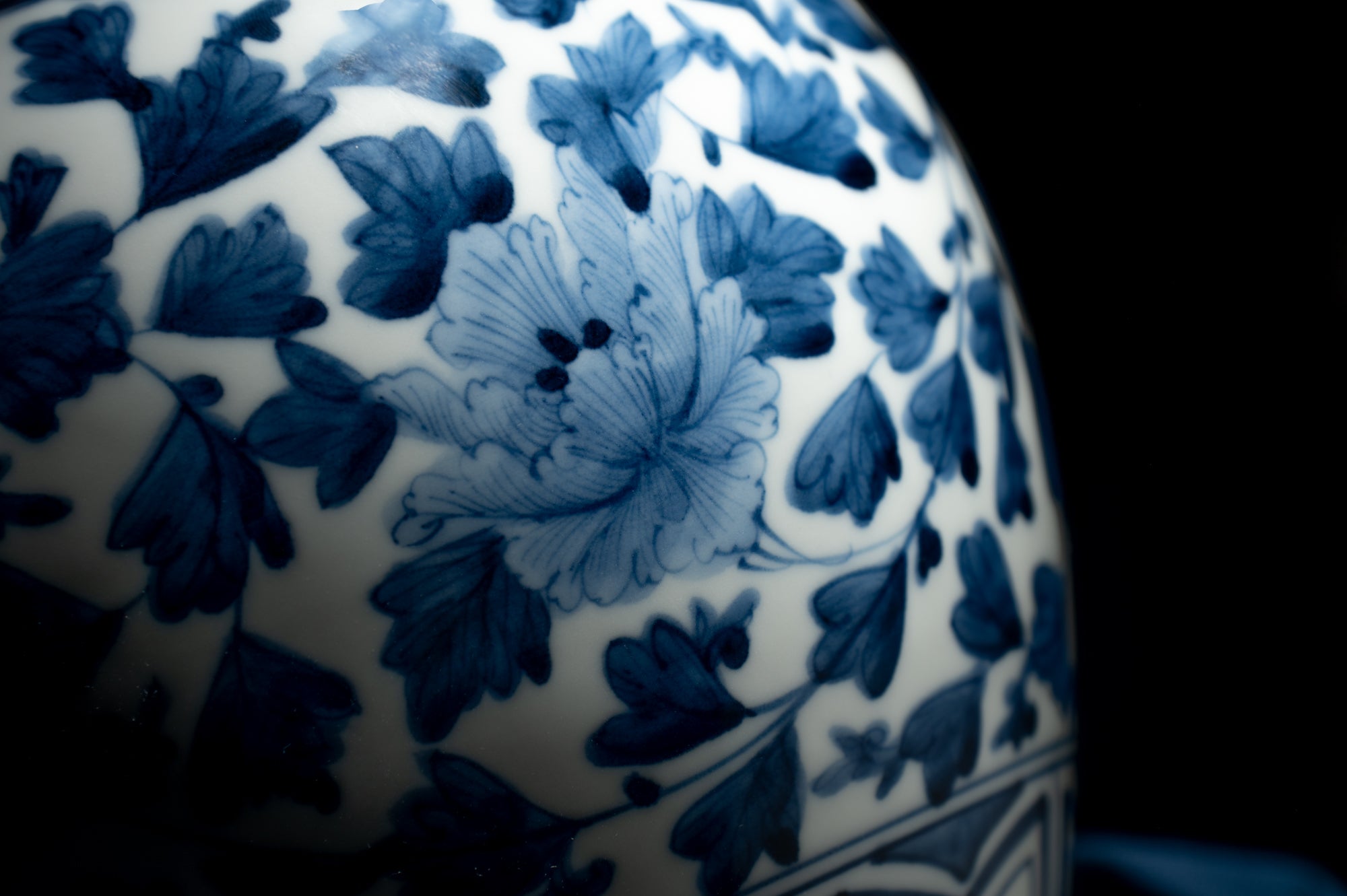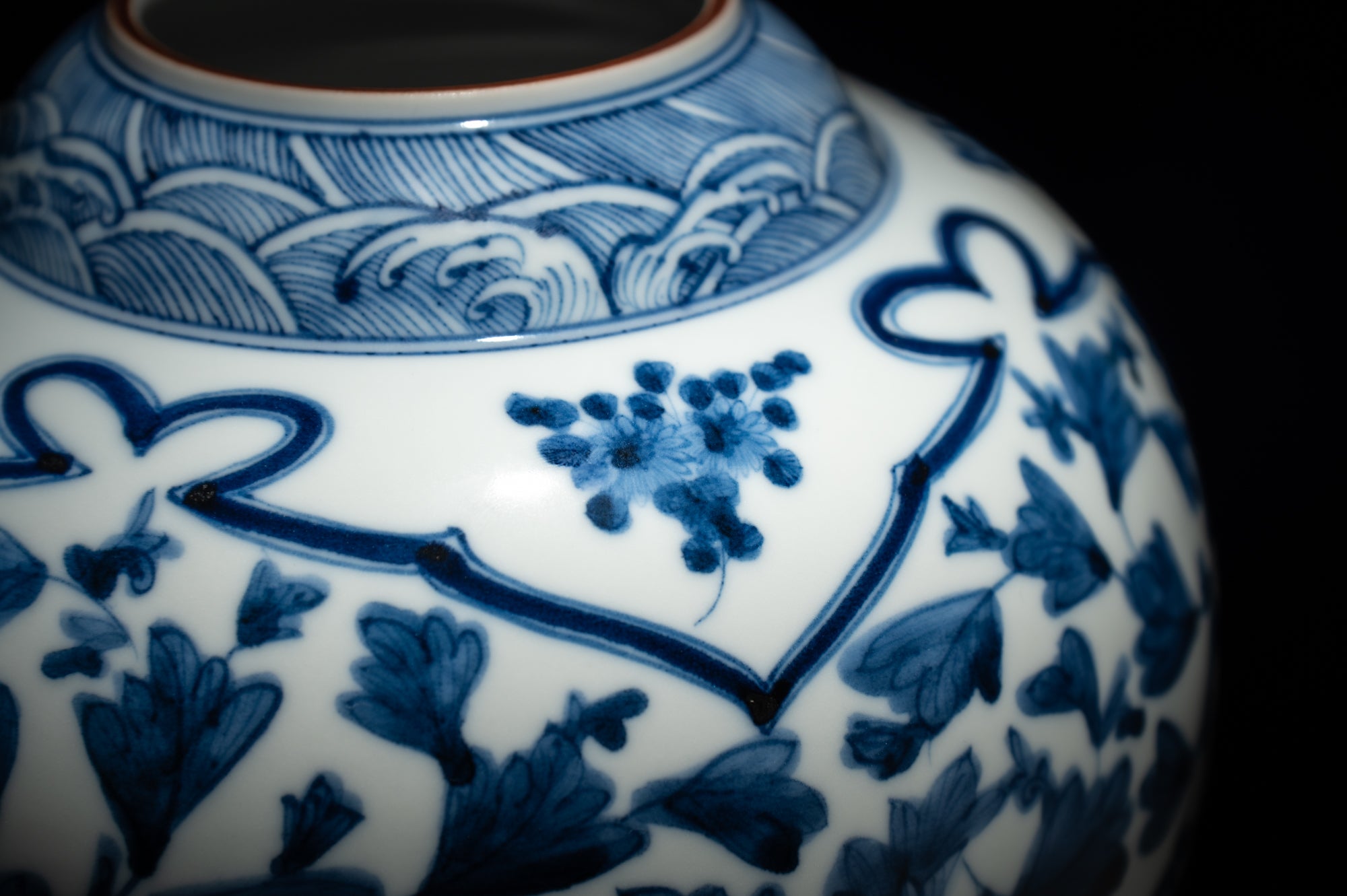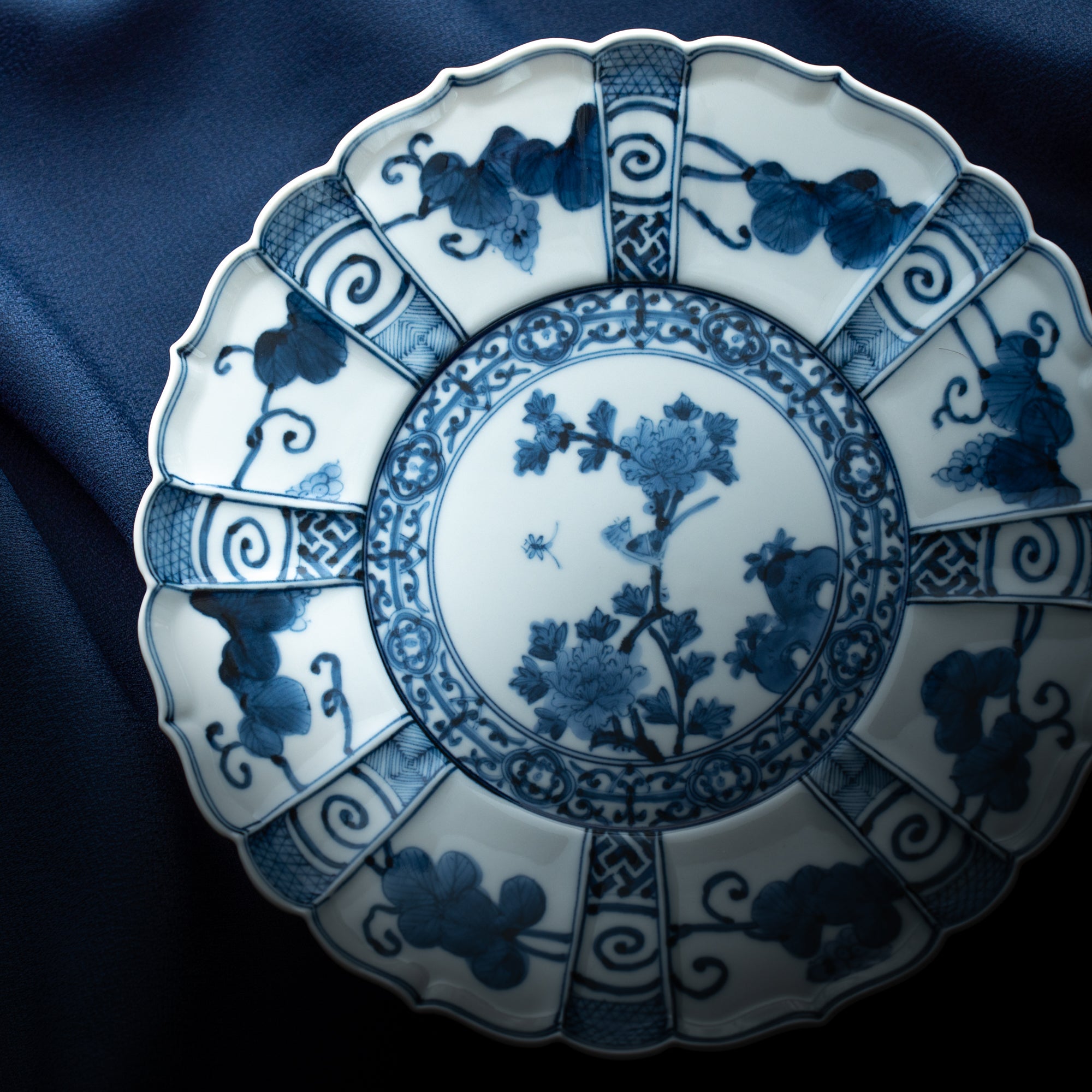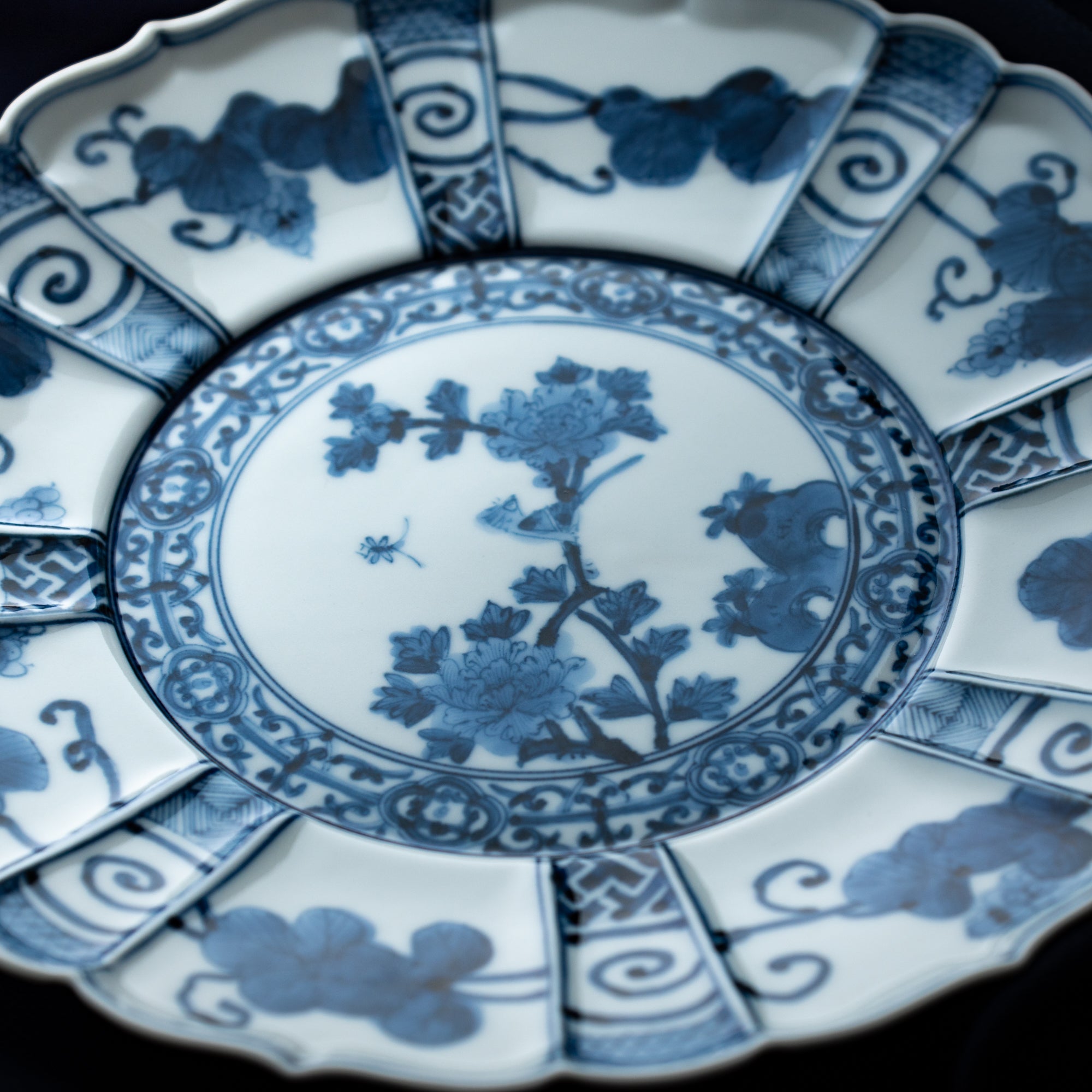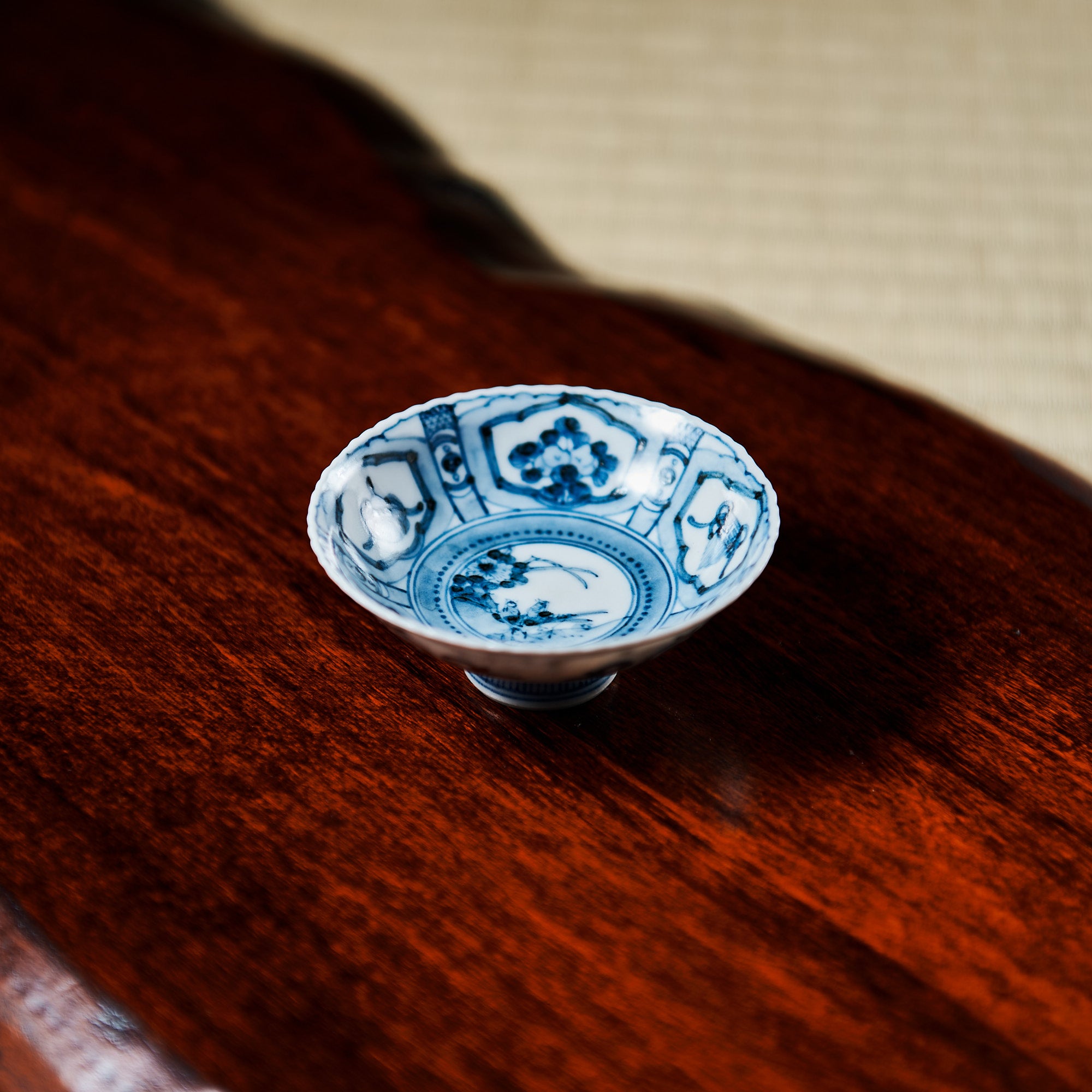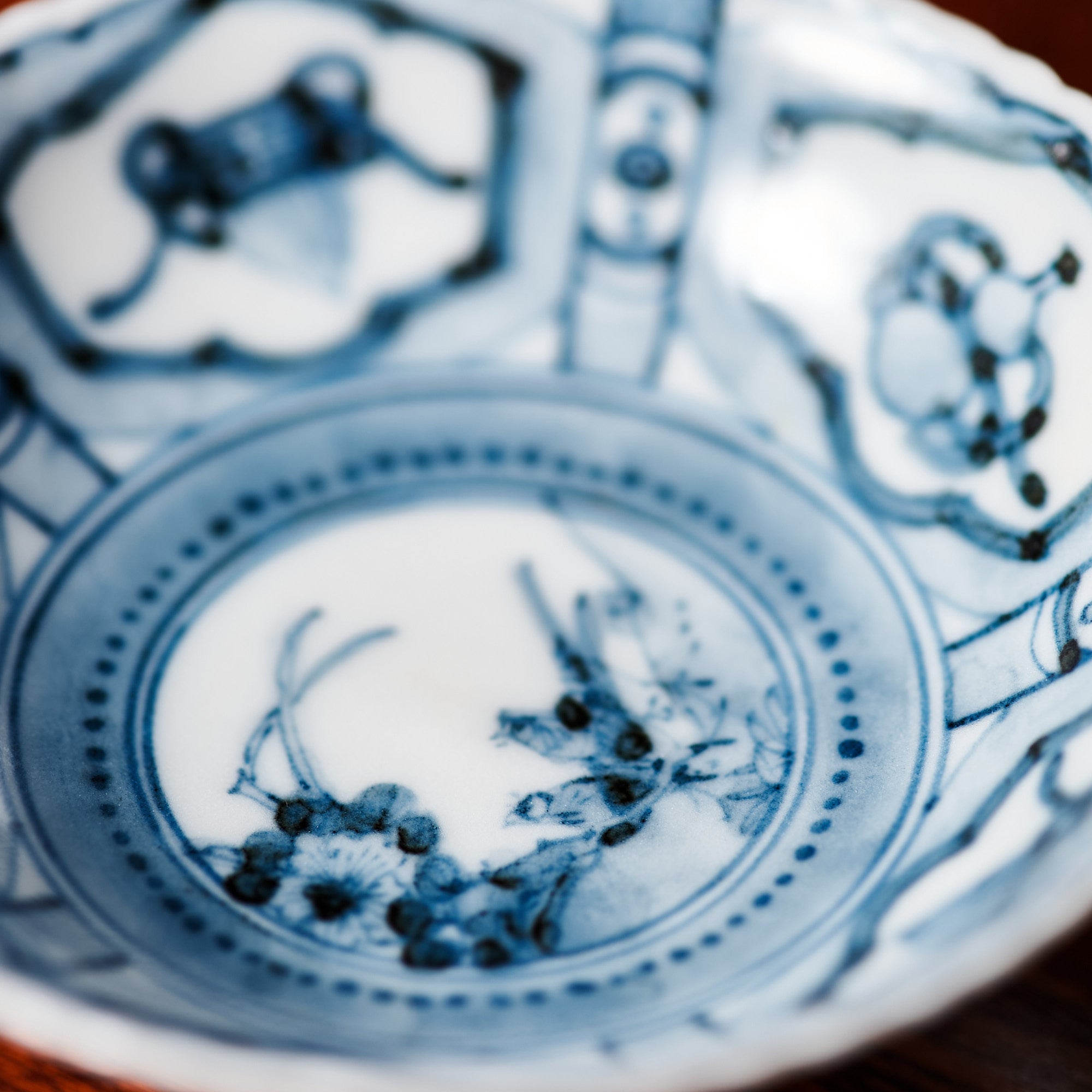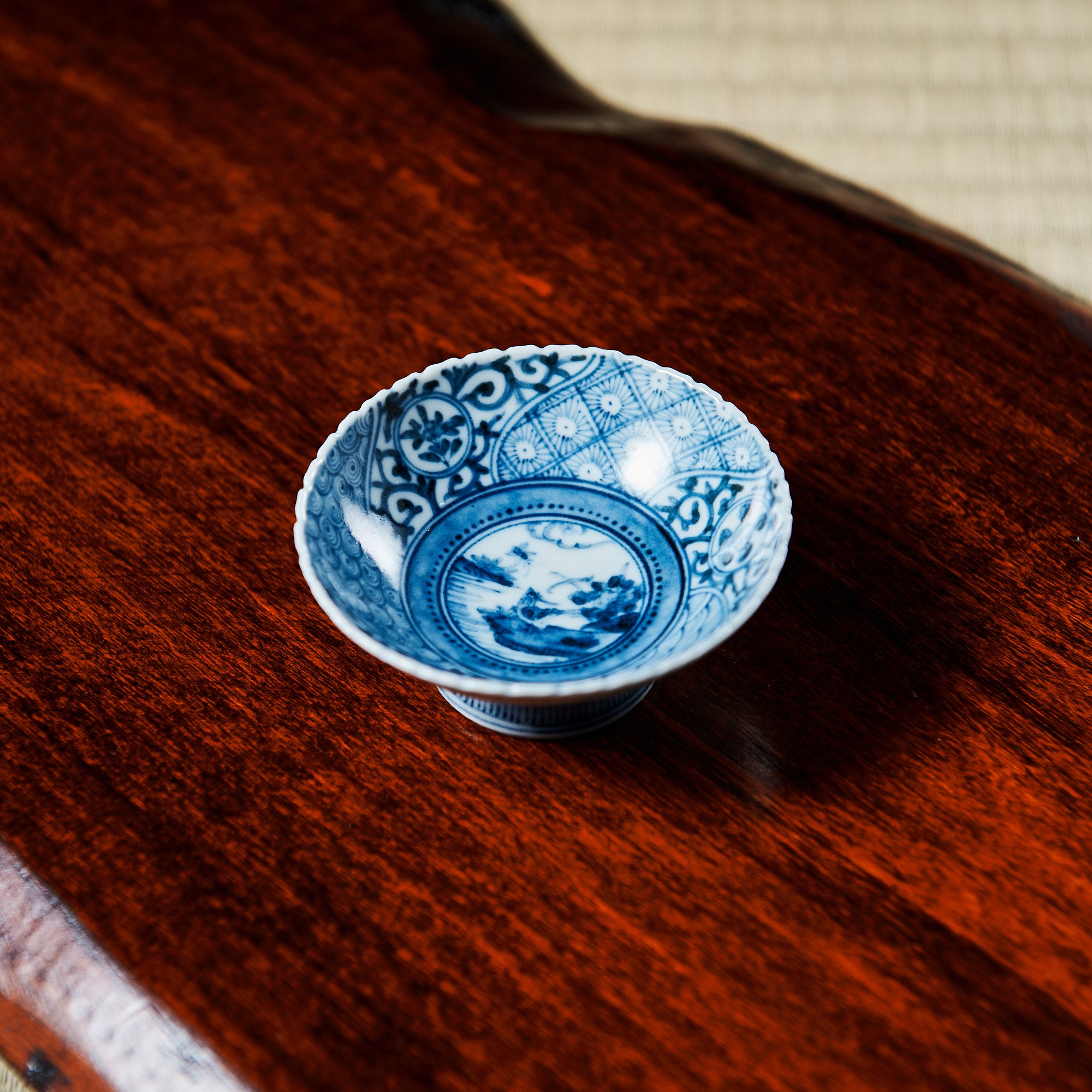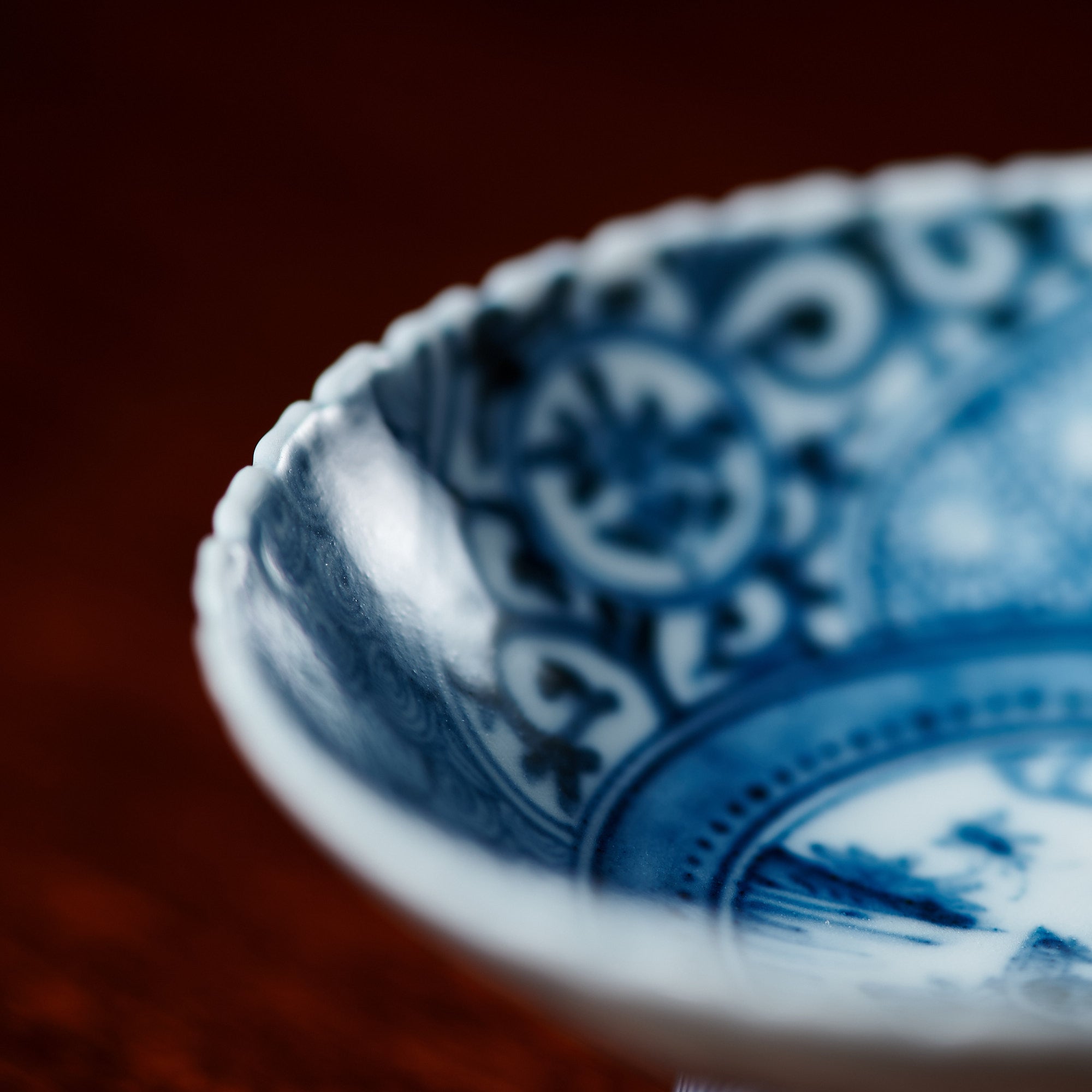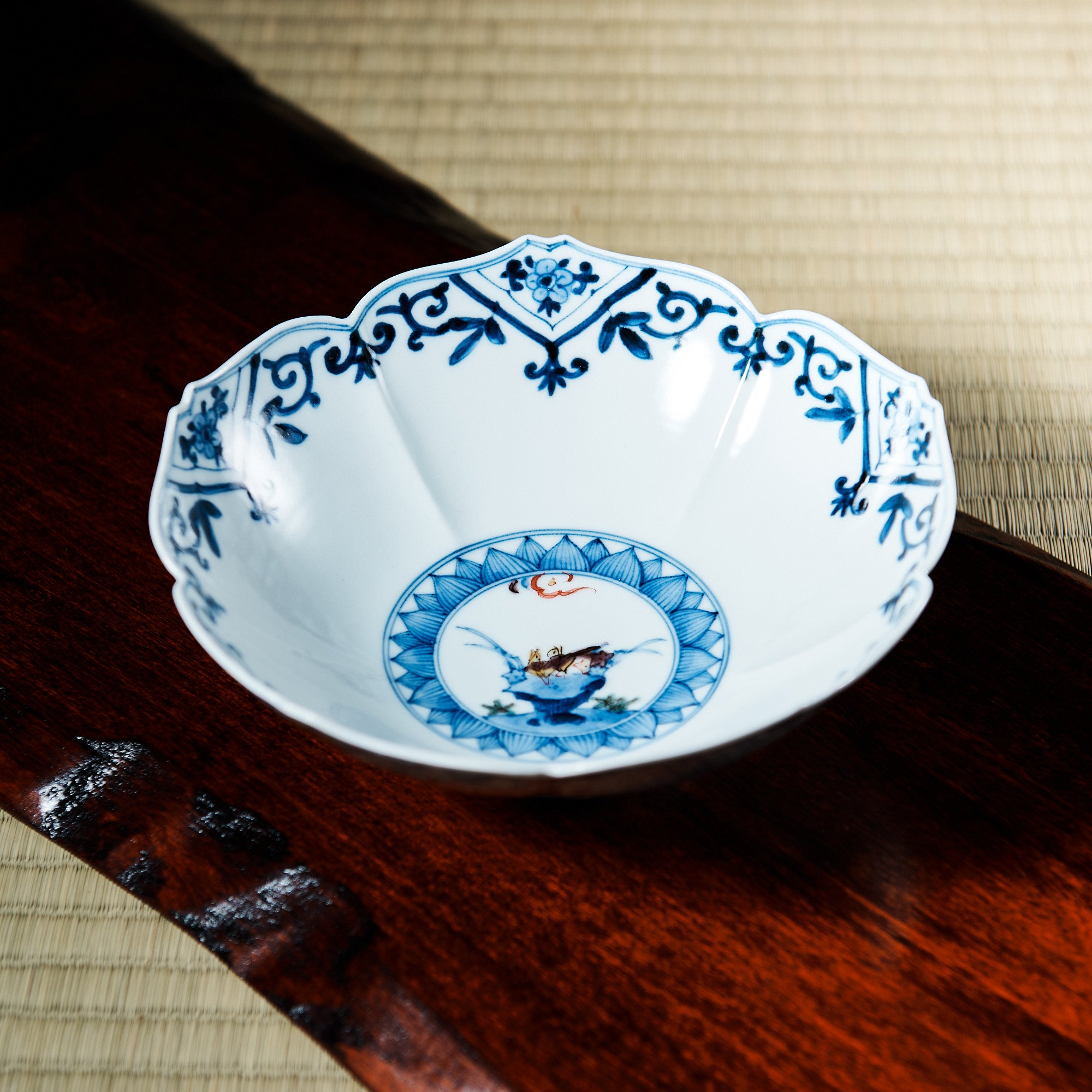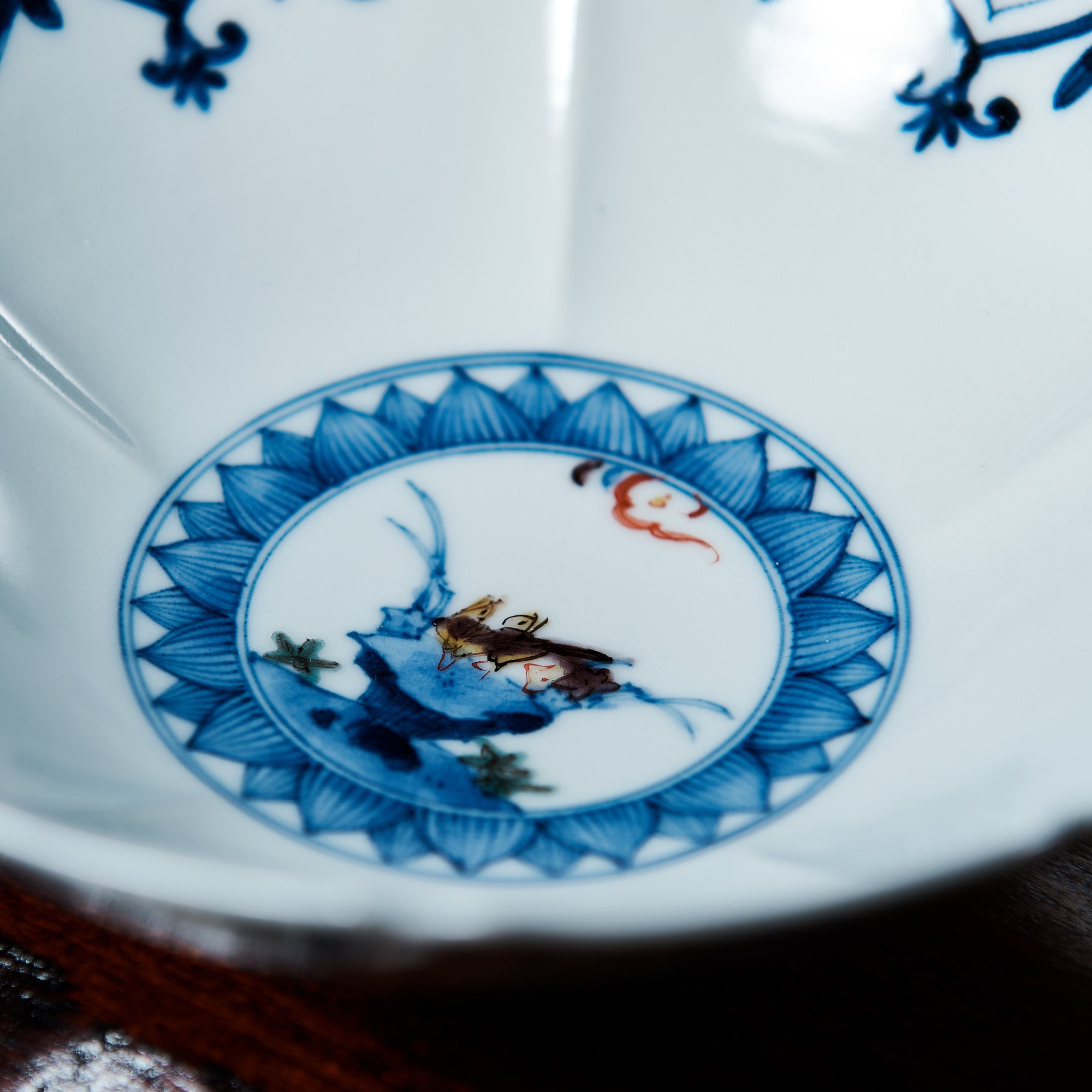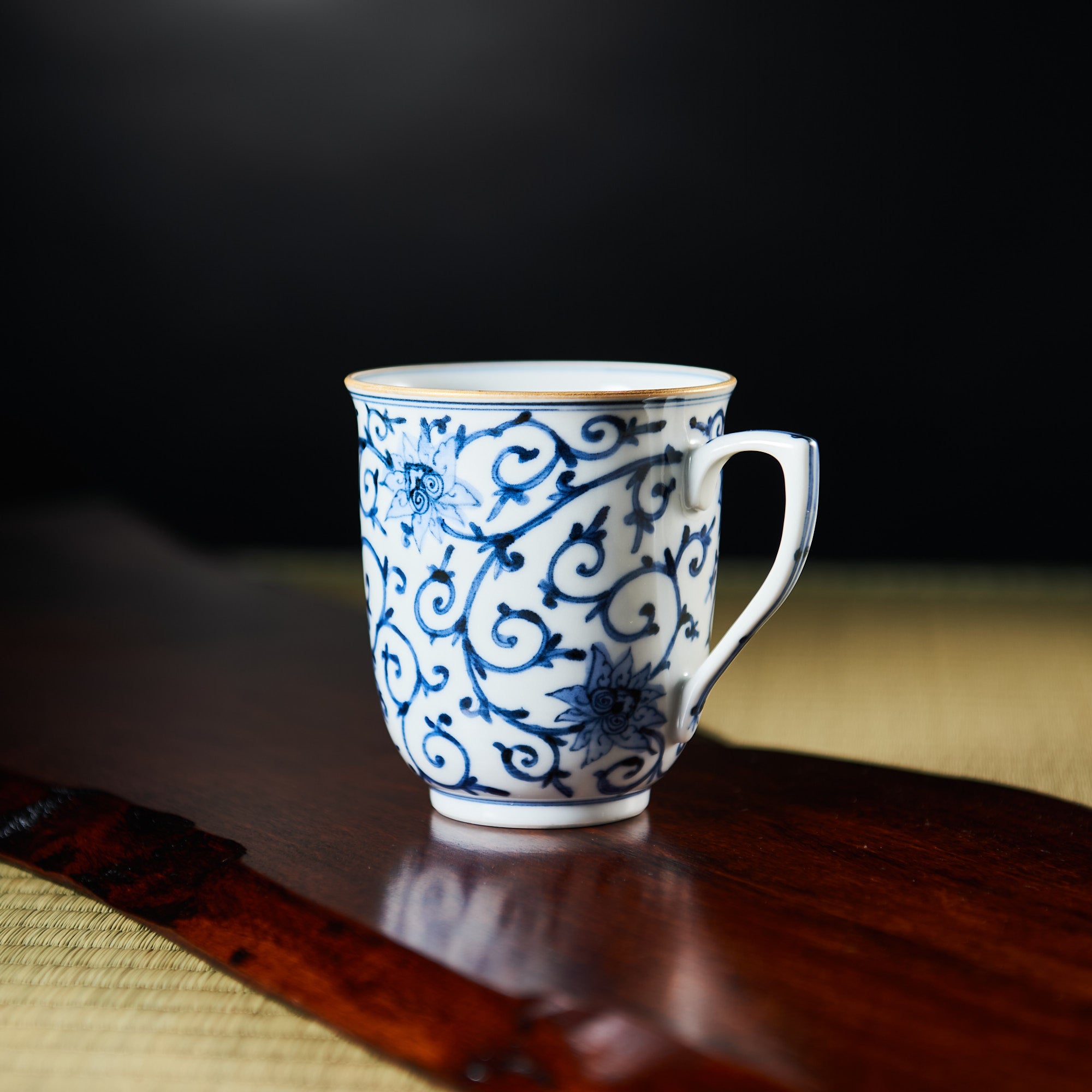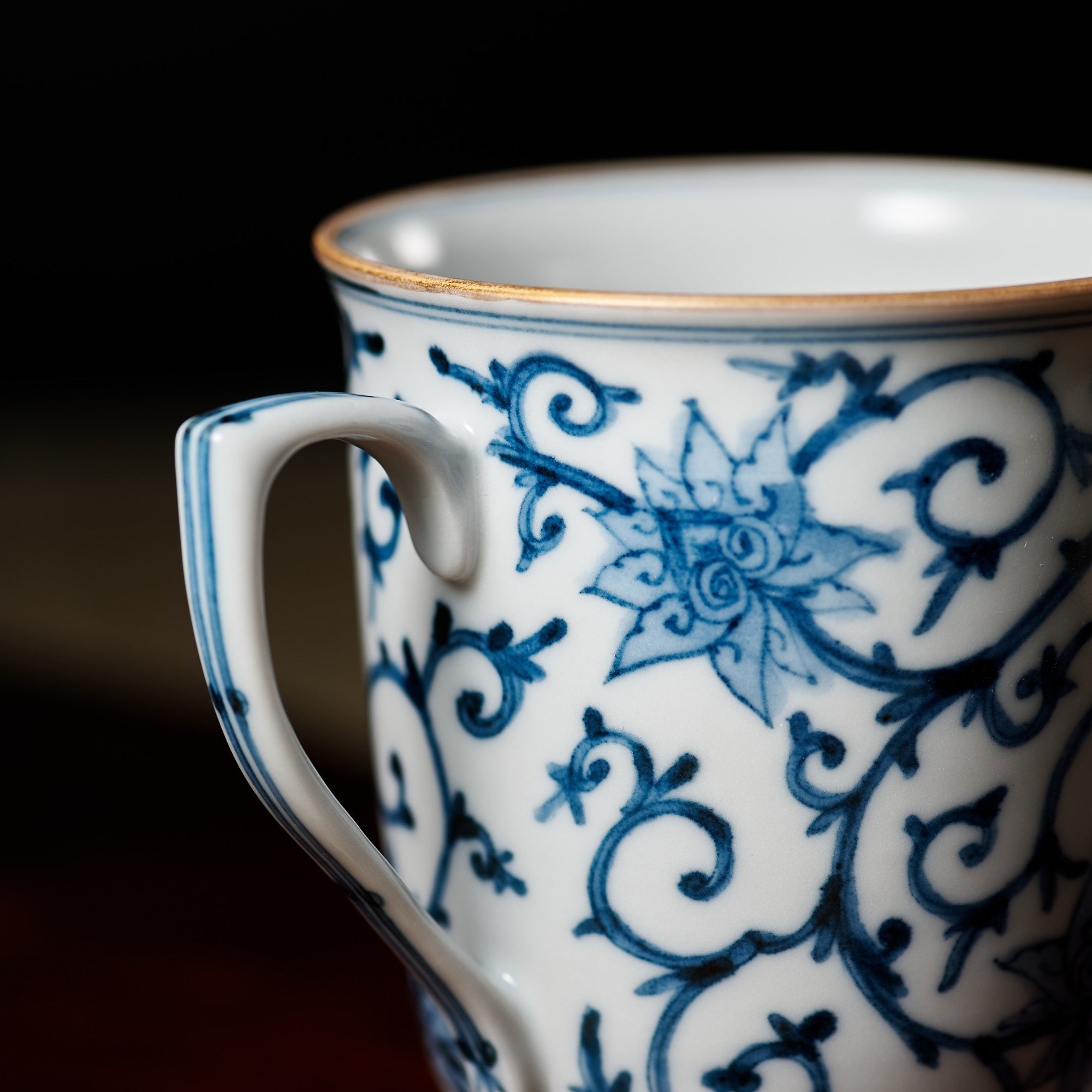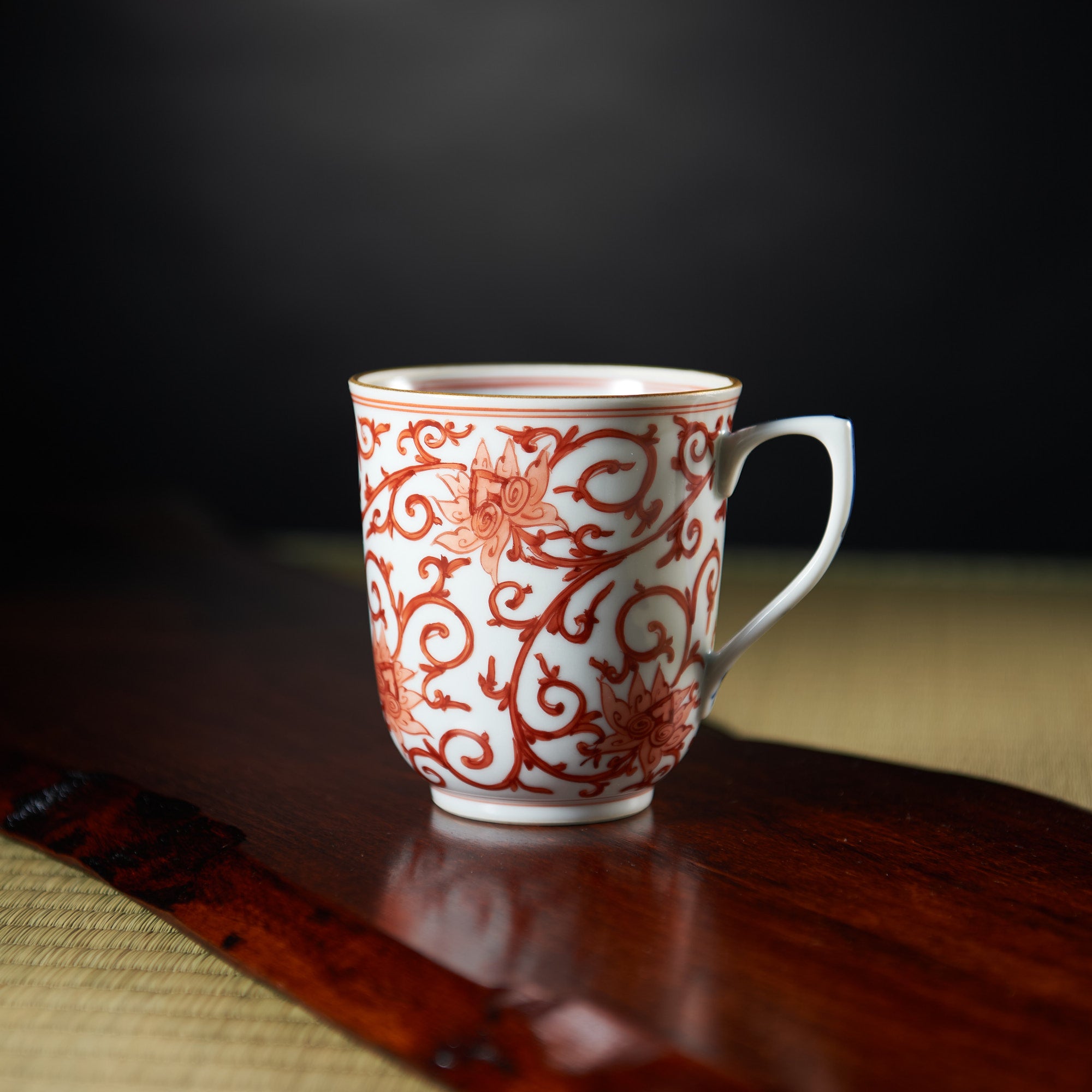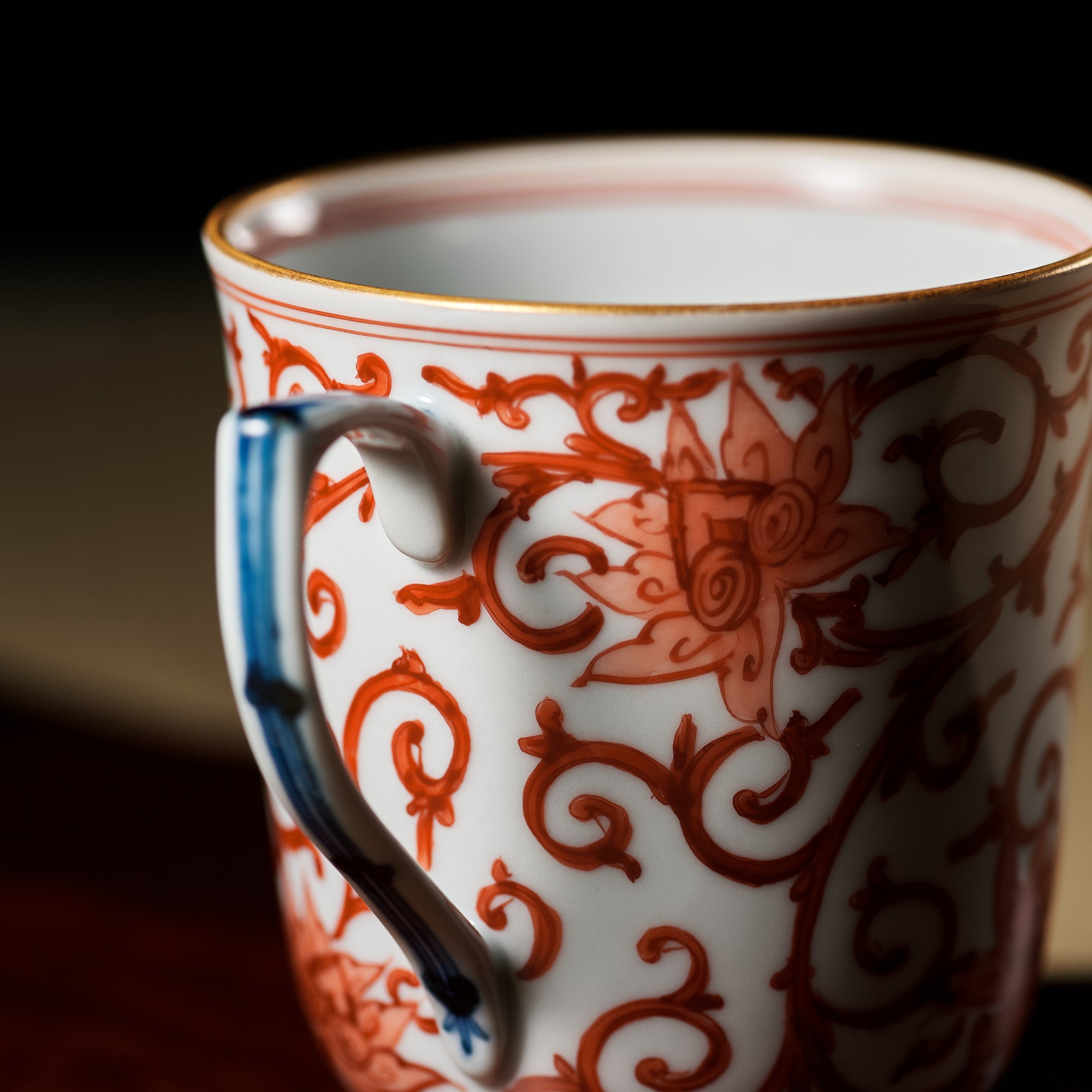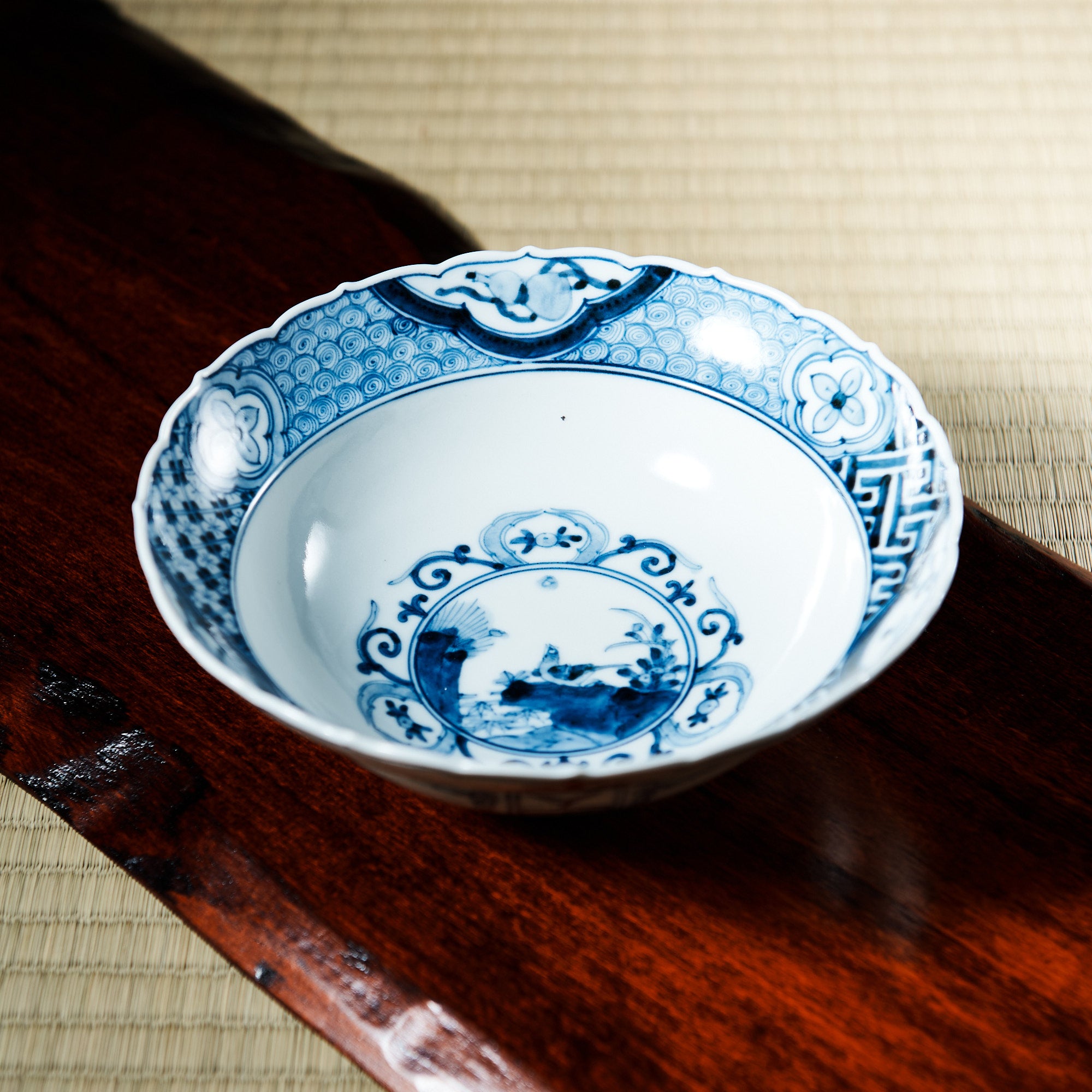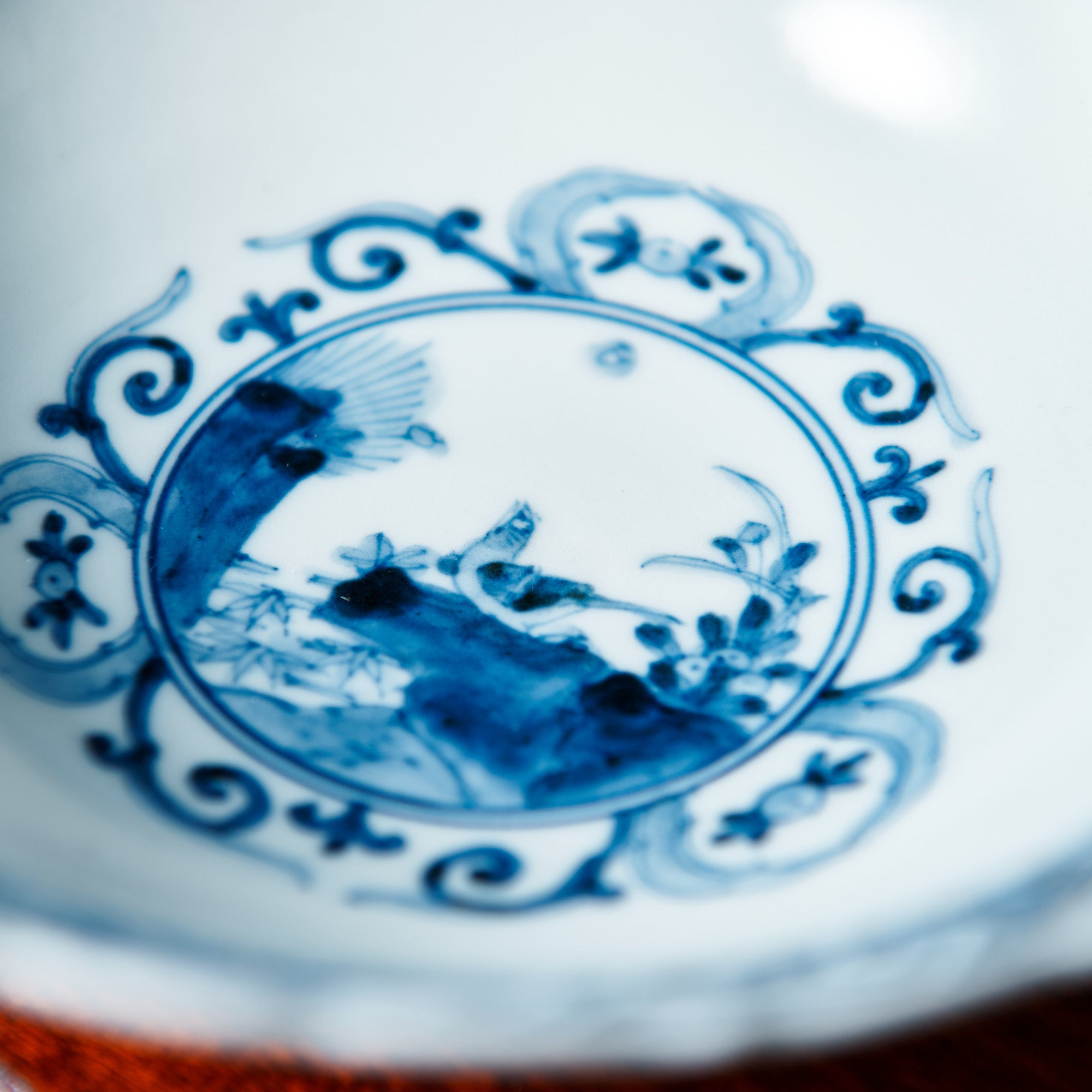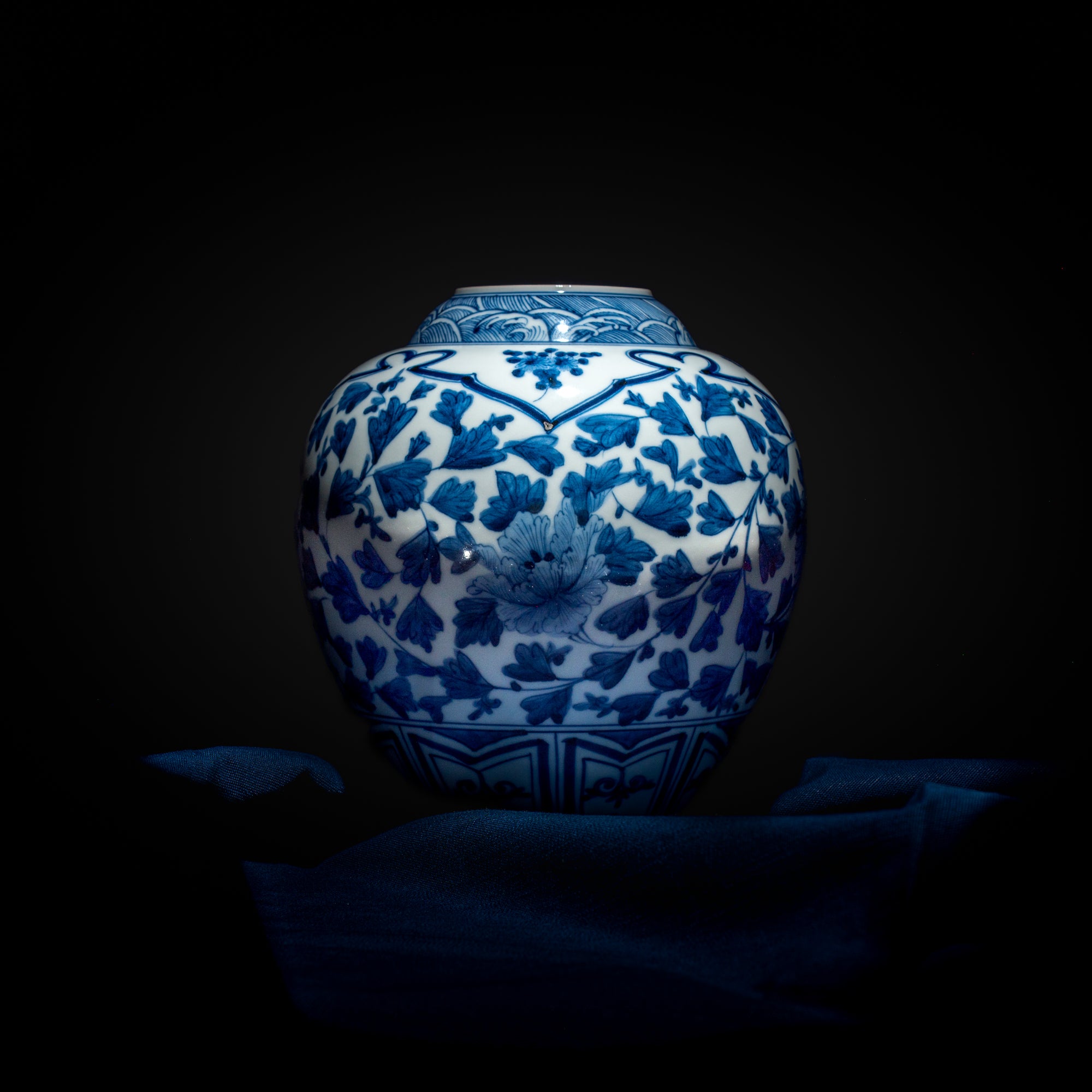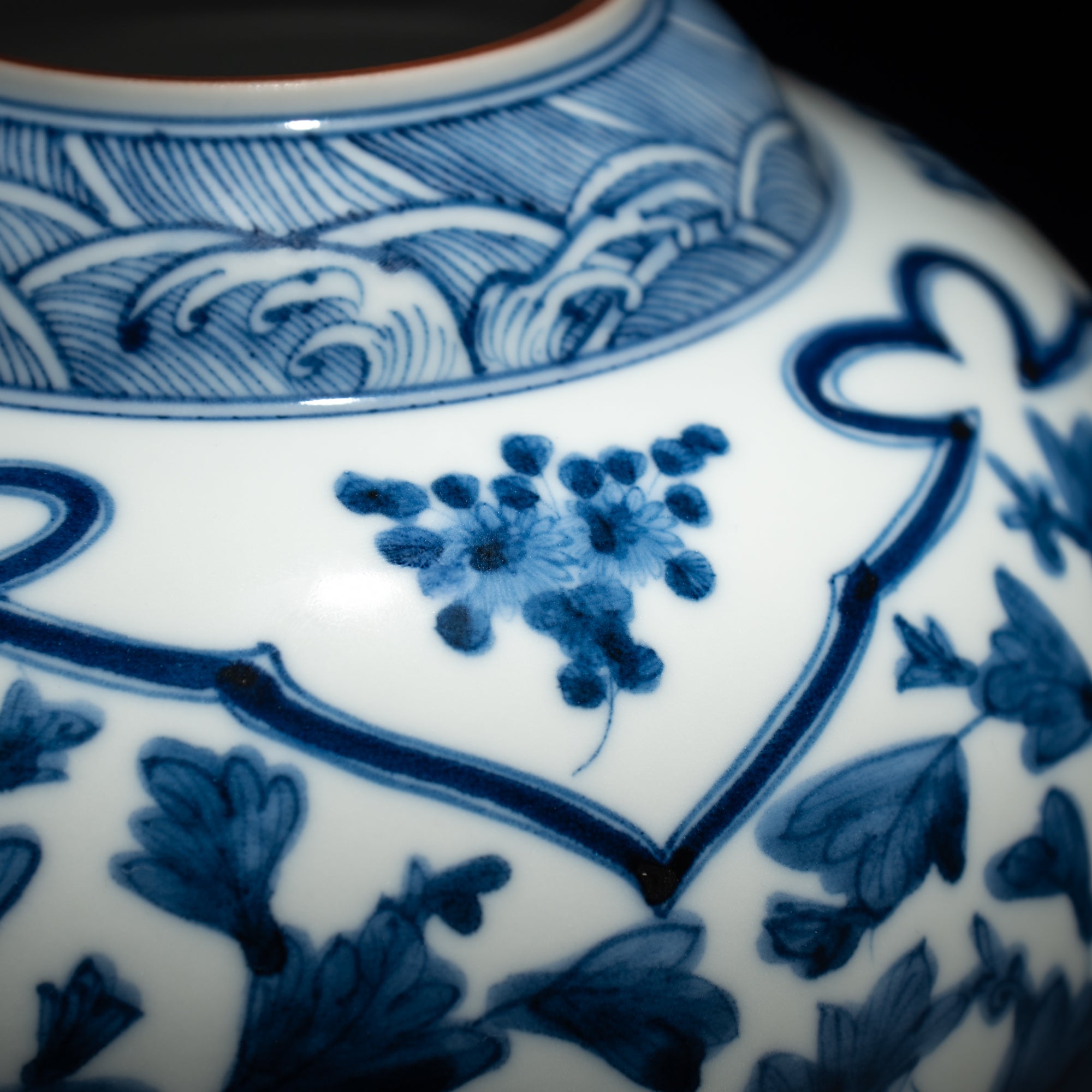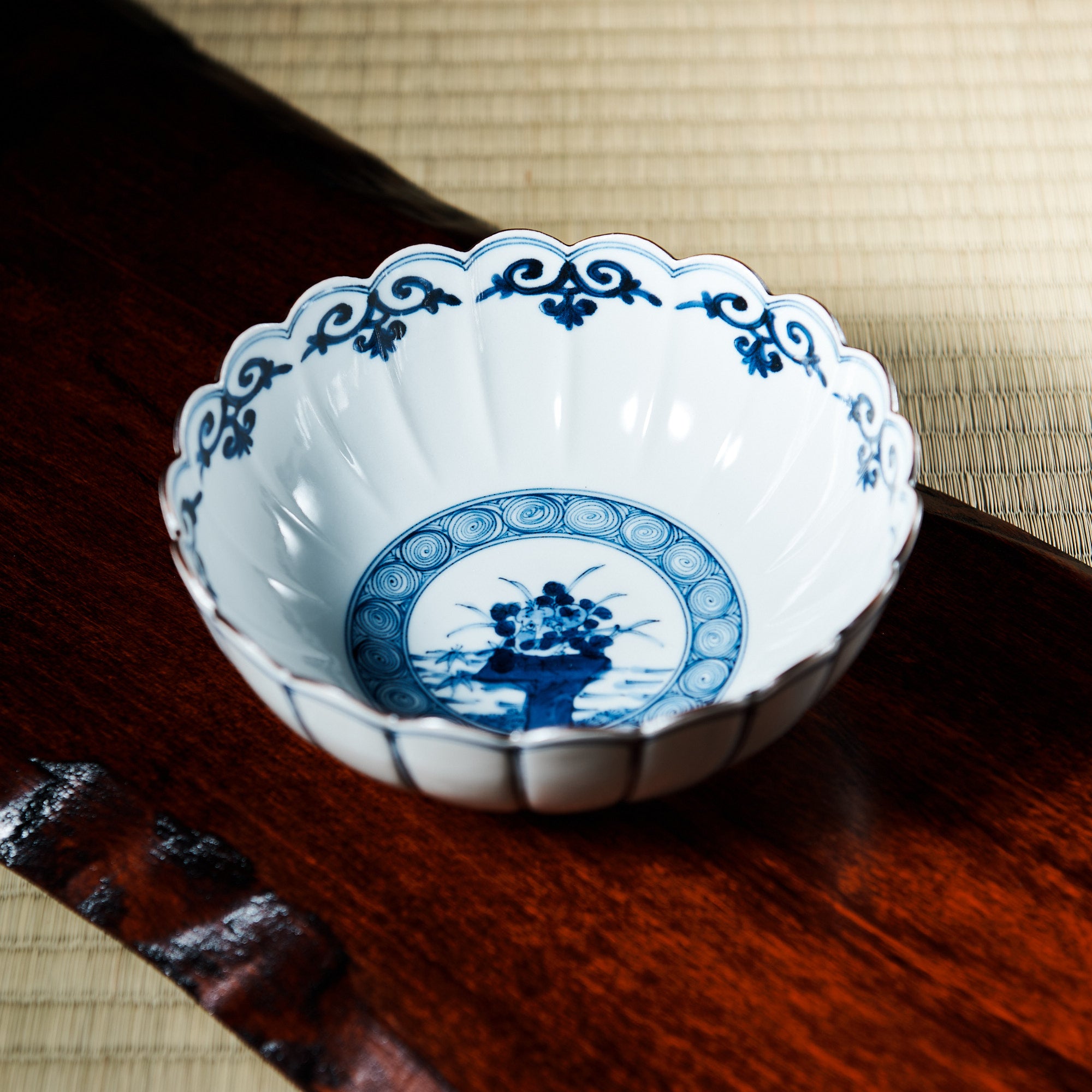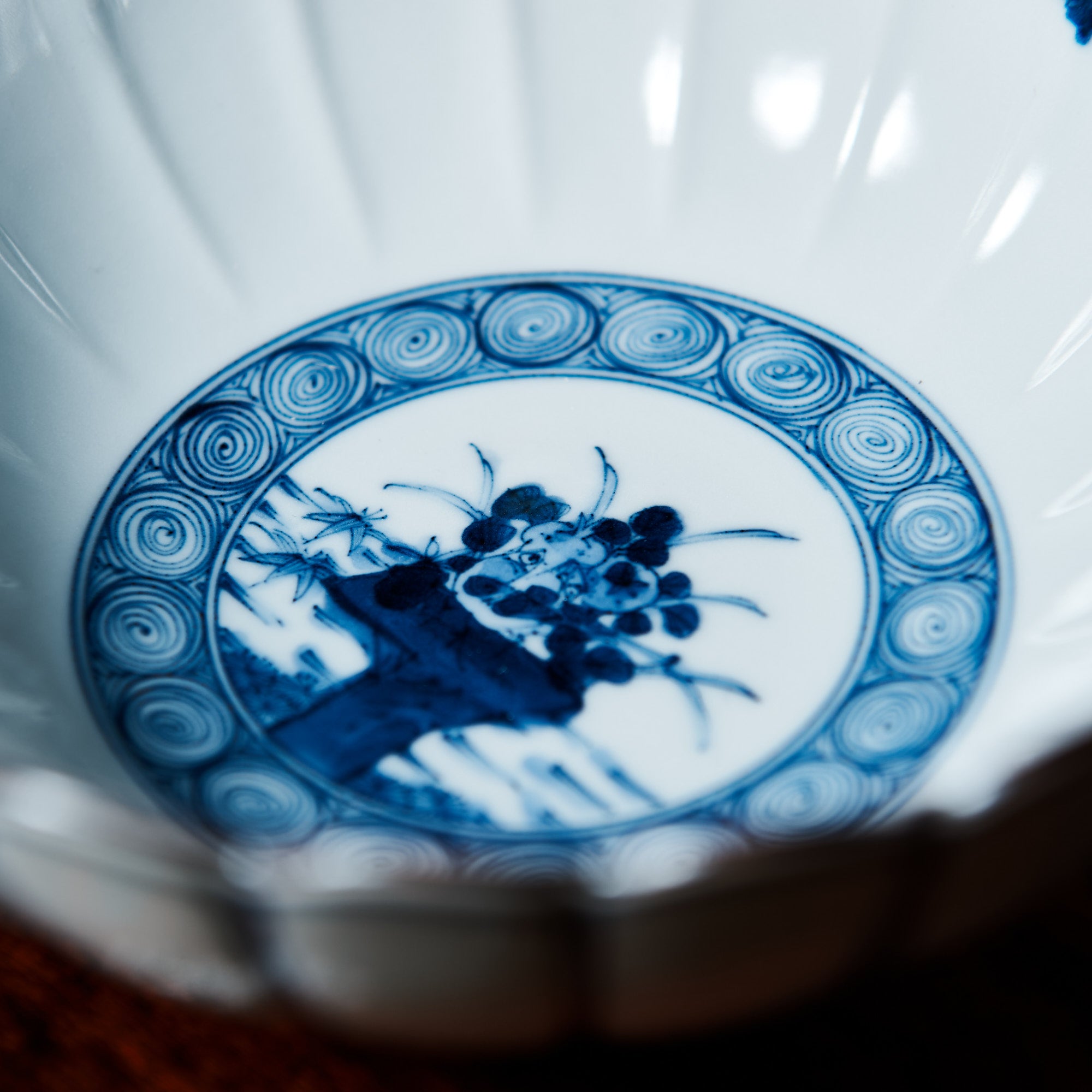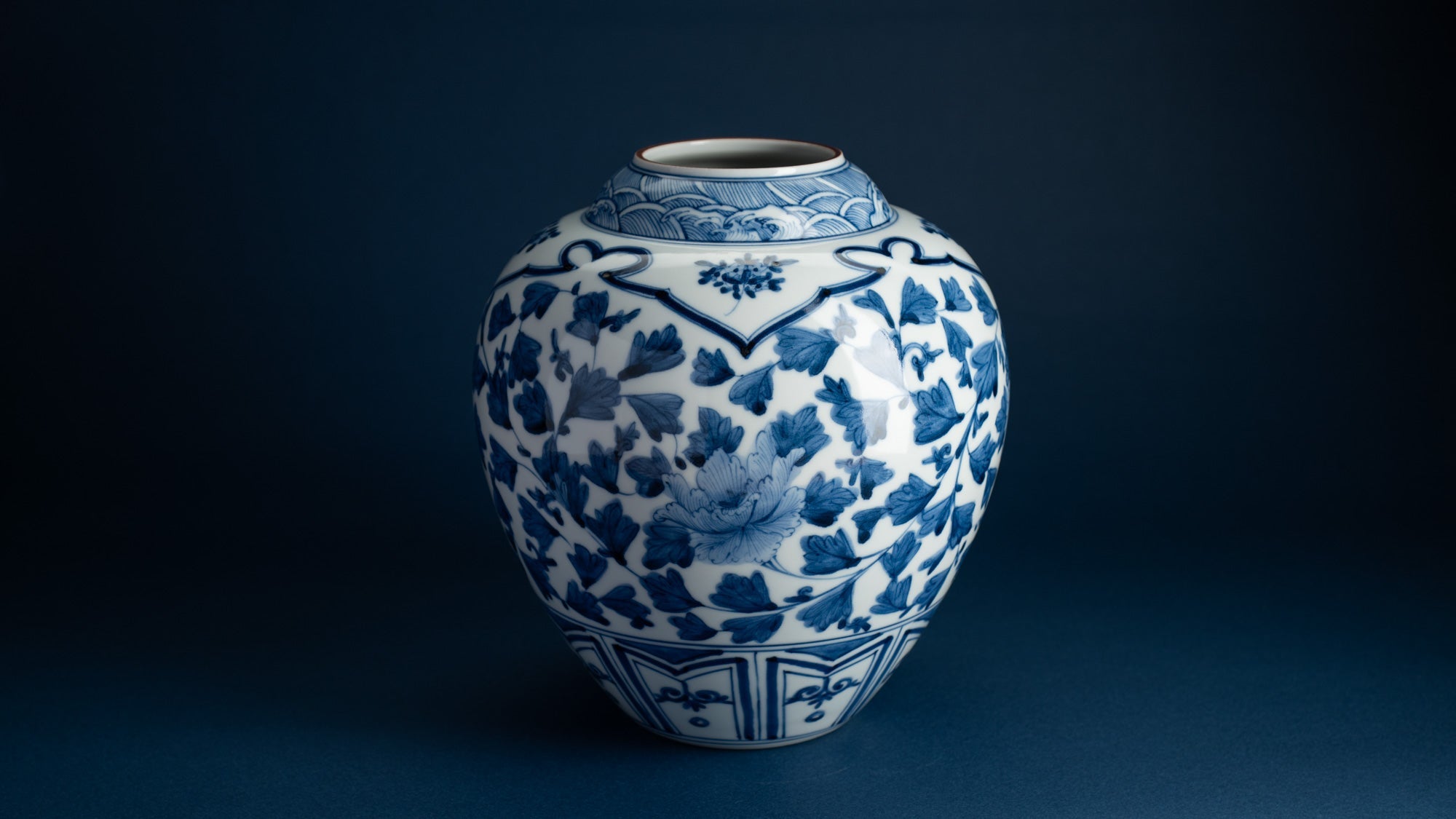
Beauty Nurtured Within Classics
Yamamoto Choza
Yamamoto Choza is renowned for his innovative synthesis of traditional elegance and modern creativity in blue Kutani ware pottery, also known as ai-Kutani. With years of disciplined study and refined technique, he transforms classical forms through delicate brushwork and a controlled tension that unfolds a narrative of timeless artistry.
Inspired by antique aesthetics, his ceramic art is imbued with auspicious motifs and profound philosophical resonance, creating porcelain pieces that honor heritage while engaging a contemporary audience.
The Symphony of Tension and Brushwork
In his studio, every brushstroke is a deliberate act of precision and artistry. Yamamoto’s masterful approach to painting—marked by measured intensity and an intuitive grasp of color interplay—ensures that each line and hue contributes to a balanced composition. His use of delicate brushes, which are replaced within days, underscores his relentless pursuit of perfect depth and luminosity. In his creations, the serene interplay of blue and white transcends decoration, weaving an elegant tale of artistic expression.
A Conductor of Timeless Elegance
Much like a seasoned conductor guiding an orchestra, Yamamoto seamlessly fuses time-honored traditions with a contemporary vision. Drawing deeply from his passion for classical motifs, he reinterprets these elements in ways that both preserve age-old techniques and resonate with modern sensibilities. His porcelain safeguards the legacy of a storied craft, embodying his artistry as each piece becomes a composition of enduring beauty, enriching everyday moments.
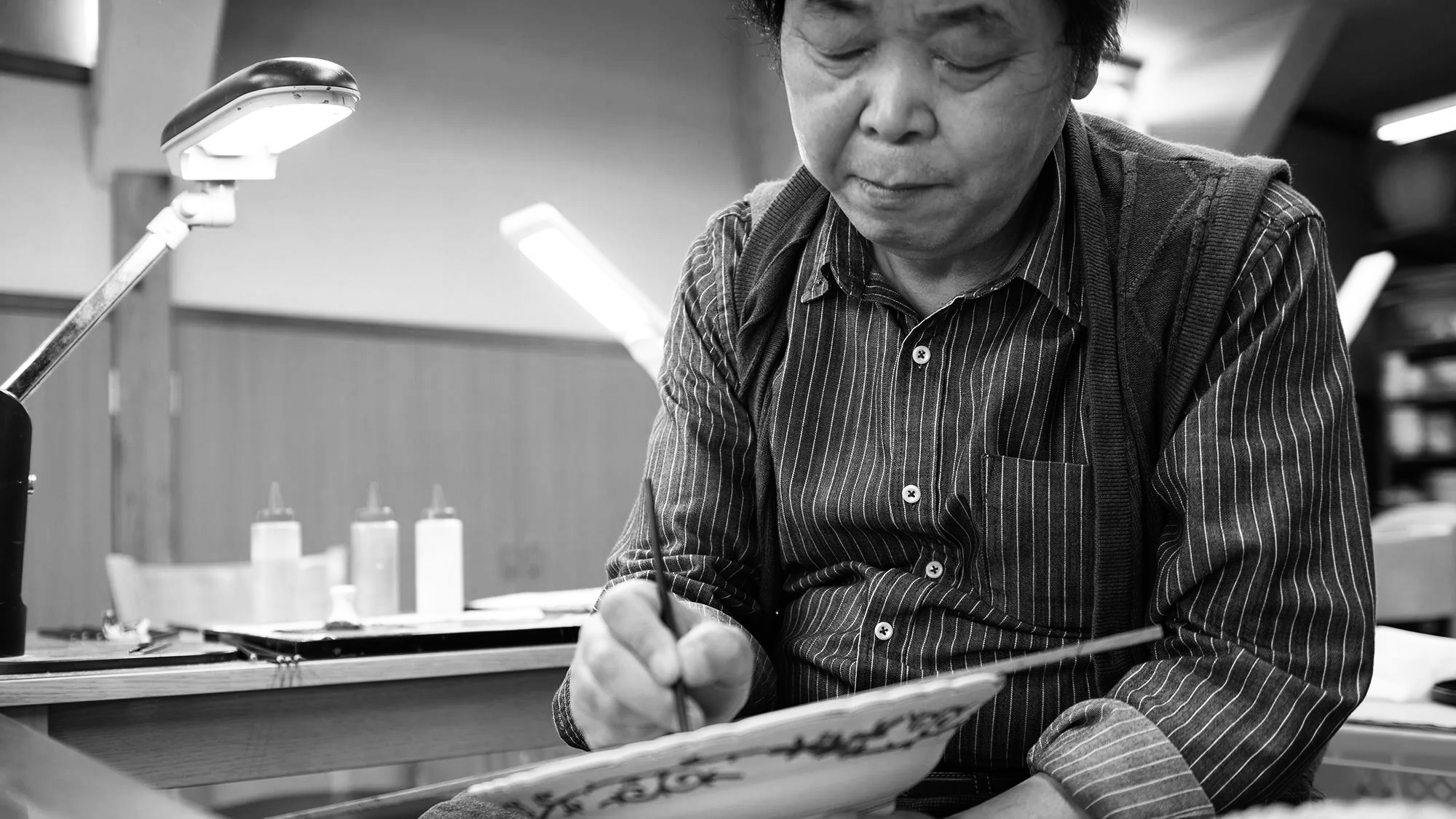
Biography
Born in 1953 in Ishikawa Prefecture, Yamamoto Choza has long been devoted to the artistry of Kutani ware, earning national acclaim for his refined sensibility and technical mastery. In 1990, he was commissioned by the Imperial Household Agency to create tableware bearing the Imperial crest for Their Majesties the Emperor and Empress—an honor that reflects both the cultural significance and impeccable quality of his work. The following year, his pieces were selected for the Kyoen-no-gi, the court banquet celebrating the Ceremony of the Enthronement, placing his craftsmanship at the center of a historic national moment.
His dedication to the tradition of Kutani ware was formally recognized in 1994, when he was designated a traditional craftsperson by the Minister of International Trade and Industry (now the Minister of Economy, Trade and Industry)—a prestigious title awarded to those who carry forward the legacy of Japanese craft with exceptional skill and care.



